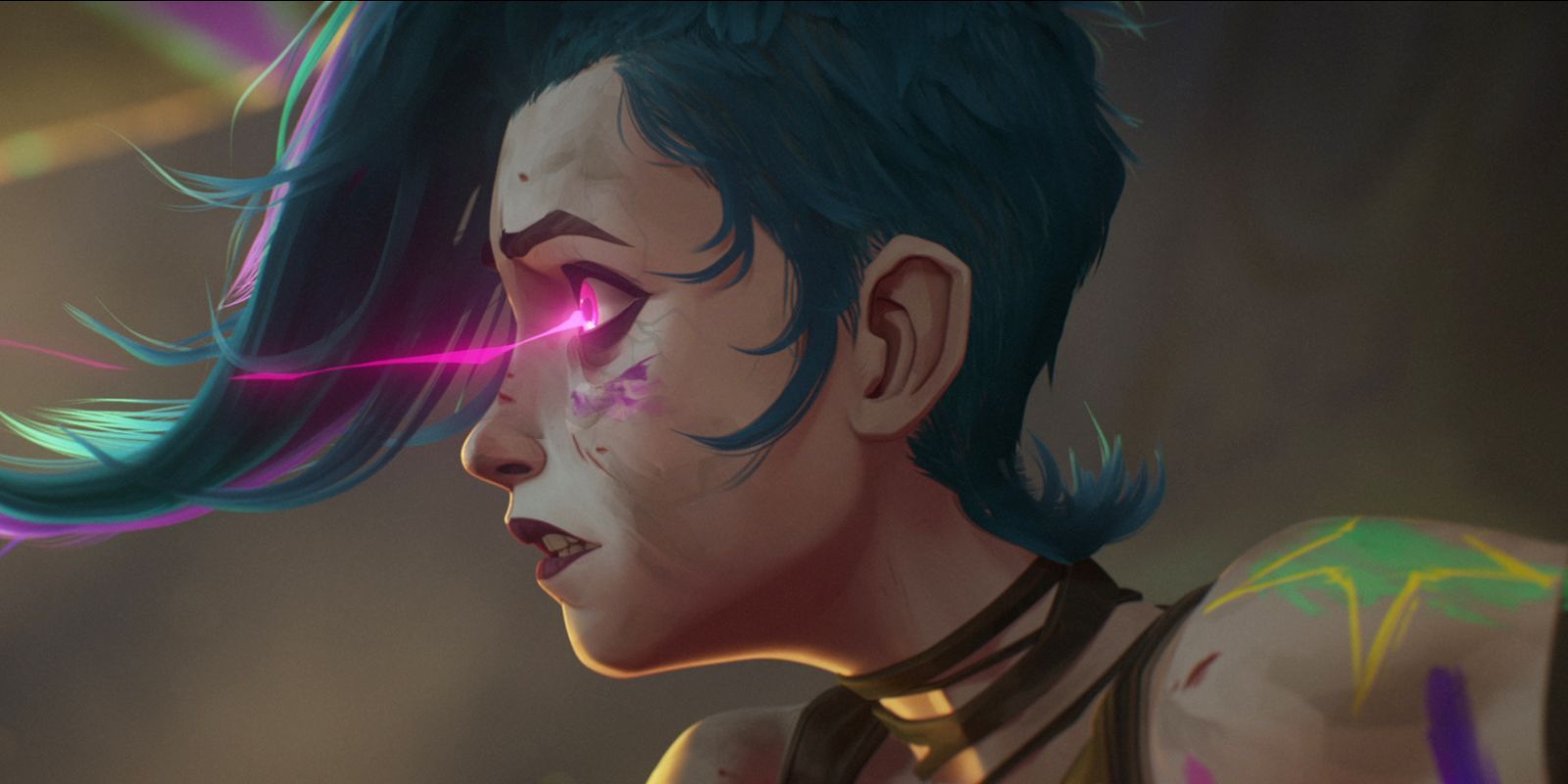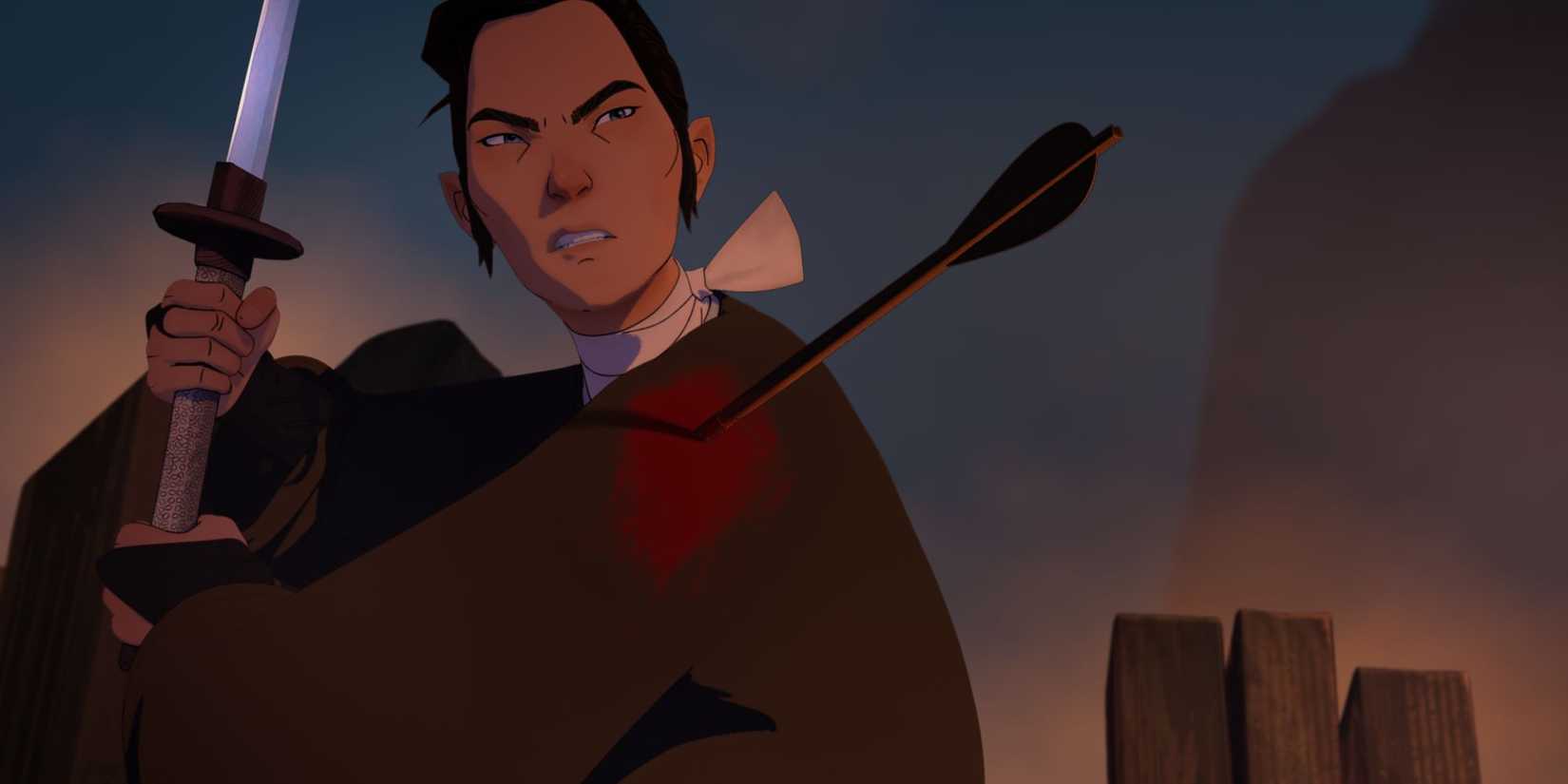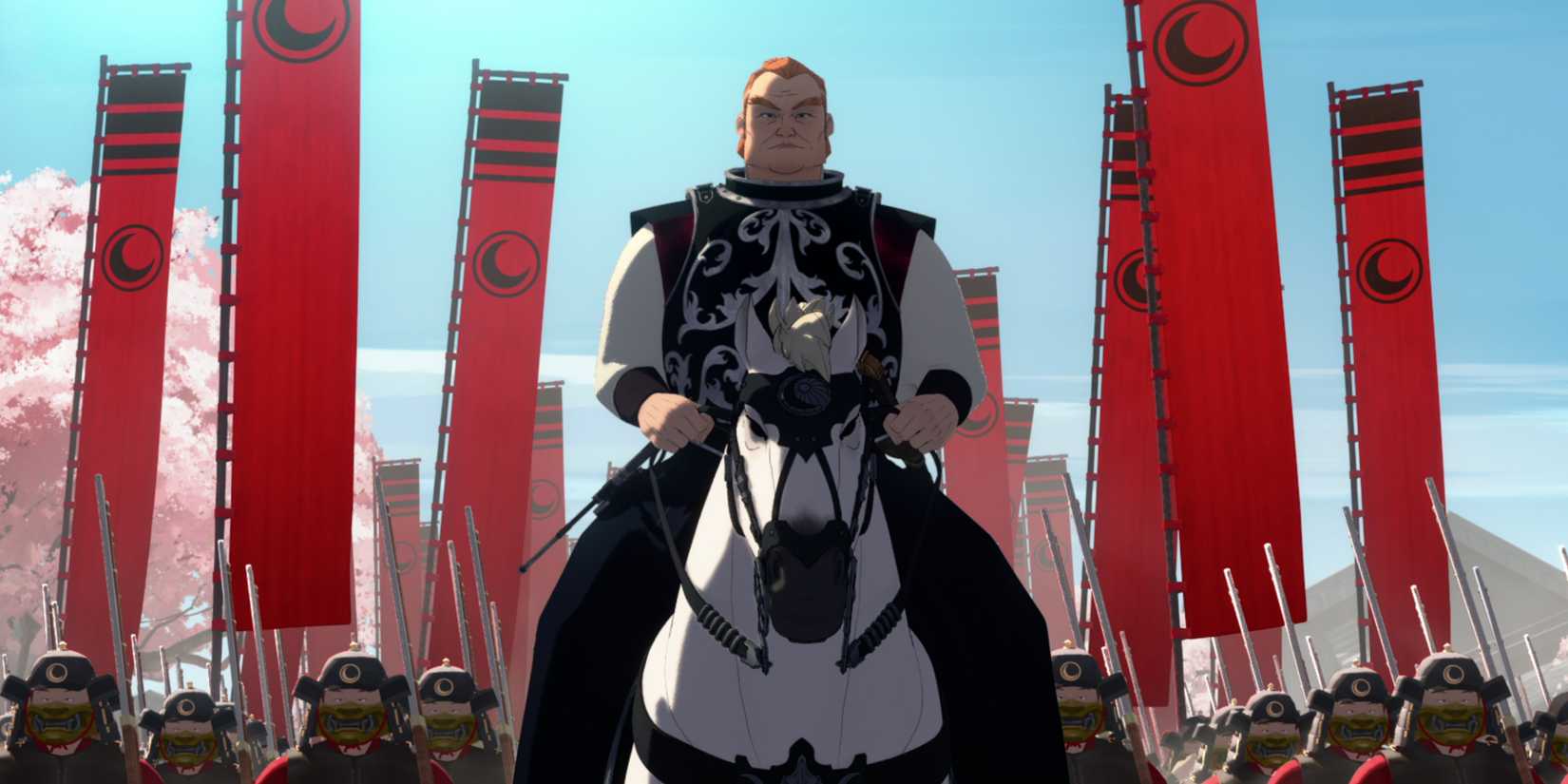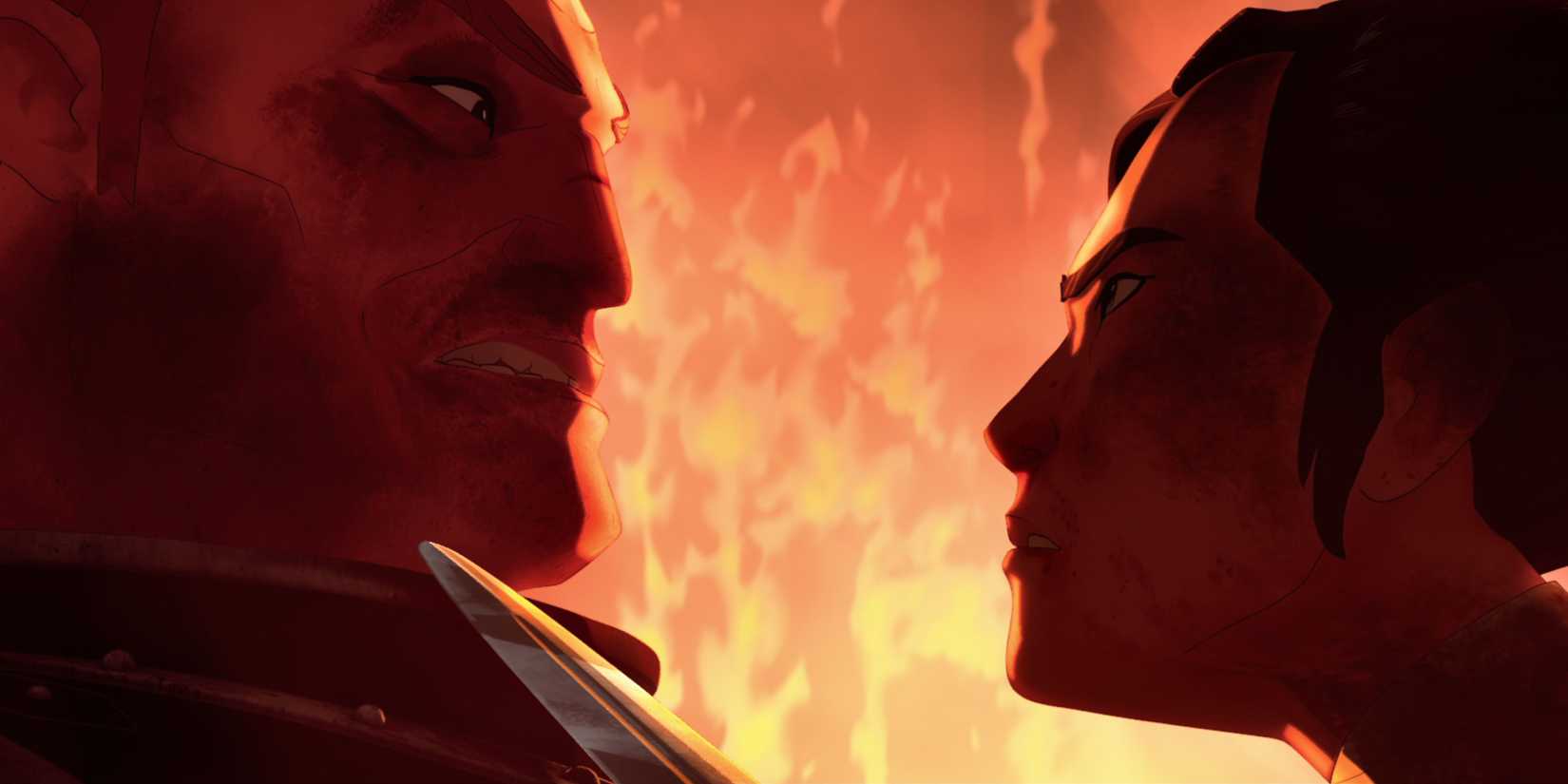
Despite receiving critical acclaim with a 97% score on Rotten Tomatoes, Netflix’s Blue Eye Samurai hasn’t gained as much popularity as Arcane. This isn’t due to the show’s quality, but rather its origins. Arcane benefited from an existing fanbase thanks to the League of Legends game, a large marketing campaign, and the fact that it was based on pre-existing material. Blue Eye Samurai, on the other hand, had to build its world and audience from scratch.
The drive for revenge keeps the story moving quickly and the characters engaged, something the second season of Arcane didn’t quite achieve at the start. Every scene feels purposeful and advances the plot, avoiding unnecessary explanations or drawn-out sequences. While Arcane is visually stunning and emotionally resonant, Blue Eye Samurai is more focused, streamlined, and effective in developing its characters and story.
The first season of Blue Eye Samurai ends with a feeling of exciting potential, clearly setting the stage for a bigger story. This strong direction makes me optimistic about season 2; unlike Arcane season 2, which felt a bit unfocused, Blue Eye Samurai seems firmly anchored by the cliffhanger ending and will likely maintain a more direct narrative path.
Why Blue Eye Samurai Is Better Than Arcane
 COURTESY OF NETFLIX
COURTESY OF NETFLIX
Both Arcane and the other series feature characters struggling with hardship, but they explore this pain in very different ways. Arcane starts with two sisters separated by social class, conflict, and differing ideals. Vi tries to overcome her losses, while Jinx spirals further into feelings of guilt and mental instability.
The animated series Blue Eye Samurai follows Mizu, a skilled swordswoman of mixed heritage in historical Japan, driven by a lifelong quest for revenge. Unlike Arcane, which focuses on characters overcoming past trauma, Blue Eye Samurai uses tragedy as the core reason for its protagonist’s actions, giving the show a distinctly different and darker feel.
Stories about revenge tend to be more gripping because they have a clear direction, while stories about redemption often feel slower and more uncertain. Mizu’s fury drives her to overcome every challenge – making this one of the most exciting revenge storylines on television in years – but Vi’s journey towards forgiveness feels stuck between thinking about the past and feeling sorry for it.
As a film and TV lover, I’ve been thinking about how different shows handle character growth. Arcane really took the time to let its characters heal, which meant slowing down to explore their inner lives, but Blue Eye Samurai does something totally different. It just goes. It doesn’t pause for reflection, and honestly, it’s brilliant. The violence feels impactful because you understand why it’s happening, not because characters are endlessly talking about it. This approach creates a really tight, focused story that never loses steam – it all happens within one season, and it’s incredibly satisfying.
What really makes Blue Eye Samurai work for me isn’t just Mizu’s incredible journey, but how well the supporting characters are developed. Each one – Taigen, Akemi, even Ringo – goes through their own meaningful change that actually reflects what Mizu is struggling with inside. Taigen learns to be more humble after a tough loss, Akemi finds her own power both politically and emotionally, and Ringo discovers a bravery that doesn’t rely on anyone else. It’s a really smart way to build the world and deepen the story.
The first season of Arcane did a great job of balancing its many characters, seamlessly integrating Caitlyn, Jayce, Viktor, and Mel into the political landscape of Piltover. However, the second season lost some of that focus. The show introduced so many side stories that it felt more like it was building towards future spin-offs than resolving the current plot. While not as bad as some other shows that prioritize universe-building, we already know more League of Legends spin-offs are planned.
Season 2 of Arcane spent a lot of time on Jayce’s struggles with doing the right thing and Viktor’s intense focus on his research, but these storylines didn’t quite mesh with the central emotional conflict between Vi and Jinx – which had previously been the show’s core. While Jayce’s political dealings and Viktor’s experiments were interesting on their own, they felt different in tone and didn’t fully connect to Vi and Jinx’s story.
The strong emotional pull of the first season—fueled by the rivalry between sisters and the conflict between trust and deception—was lost in the second. It relied heavily on discussions and introspection that didn’t often connect to the main storyline. Rather than leading to a climactic showdown, the season spread its focus across multiple, separate plotlines, resulting in a disjointed pace that felt slow and lacked impact.
Although we haven’t seen the second season of Blue Eye Samurai yet, the way the first season ended feels more promising than the cliffhanger ending of Arcane. Arcane‘s finale, with Jinx destroying the Piltover council chamber, created a situation where the show had to downplay the impact of her actions just to move the story forward. Blue Eye Samurai, however, ended with a sense of growth and development, rather than relying on a shocking twist.
The main characters all underwent significant changes, clearly showing where their stories are headed: Mizu is now open about who she is, Akemi is fully embracing her rebellious side, and Taigen’s confidence has been shaken. This fresh start allows the writers to develop the characters in new directions without ignoring what’s already happened, hinting they have a solid plan for their future.
The two shows are visually quite similar. Arcane is still a standout fantasy series, particularly for its incredibly detailed and politically complex world, with the cities of Piltover and Zaun feeling more fully realized than those in many other fantasy shows. Blue Eye Samurai intentionally keeps its world more focused, but the story’s upcoming move to London promises to broaden its scope in compelling ways.
Blue Eye Samurai Is Netflix’s Most Underrated Animated Original
 COURTESY OF NETFLIX
COURTESY OF NETFLIX
Despite almost universal critical acclaim, Blue Eye Samurai seems to be one of Netflix’s most overlooked original series. While it boasts a 97% rating on Rotten Tomatoes – putting it among Netflix’s highest-rated shows – it hasn’t generated the same level of online buzz or dedicated fanbase as Arcane.
Unlike many modern shows, Blue Eye Samurai didn’t rely on popular music, a sprawling game world, or a big marketing push to gain attention. It simply aimed to be excellent in its writing, acting, and animation, and that focus on quality has allowed it to stand out and remain memorable.
The supporting characters—like Taigen, Akemi, and Ringo—aren’t just there to help the main character. They each have complex storylines that feel like they could be the focus of their own shows. Their personal growth happens alongside Mizu’s, not because of it, which gives the series a rare level of depth and makes it feel like a true ensemble piece, something you don’t often see in animated dramas.
The voice acting in Blue Eye Samurai is exceptional. Maya Erskine, Brenda Song, George Takei, and Masi Oka add depth and feeling to what could have been predictable scenes. This creates a unique series that feels carefully crafted and emotionally resonant, telling a complete story over a single season and delivering on everything it sets up from the very beginning.
Blue Eye Samurai Season 2 Could Be Better Than Arcane Season 2
 COURTESY OF NETFLIX
COURTESY OF NETFLIX
The way Arcane season 2 released episodes – in three-part batches – actually worked against the show’s energy. Each group of episodes felt like it was building towards something without delivering a satisfying conclusion, which meant the emotional impact kept getting reset. This uneven pacing also made the story feel less focused and slowed things down at the worst possible times, when it needed to be moving quickly.
Vi’s development as a leader felt a bit predictable, and Jinx, who is usually the most chaotic and exciting character, was surprisingly quiet and alone for much of the beginning. While her return later in the series was welcome, it toned down the energy she usually brings to every scene. However, it was incredibly rewarding to see Jinx find redemption at the end of Arcane season 2.
The first season of Blue Eye Samurai concluded not with a suspenseful cliffhanger, but with significant growth for its main characters. Mizu’s hidden identity is now revealed, Akemi has taken control of her own destiny, Taigen has been humbled, and Ringo has evolved from being simply loyal to forging her own path.
Each main character now has a clear direction for their story. The finale doesn’t tie everything up neatly; instead, it opens up exciting possibilities for what happens next, making future storylines feel natural and promising. This structure assures me the creators of Blue Eye Samurai have a solid plan and won’t rely on unnecessary or cliché moments – like the awkward Imagine Dragons scenes – to move the story forward.
Read More
- Золото прогноз
- Прогноз нефти
- 40-летний танец Bitcoin: Смешная долгосрочная ставка исполнительного директора.
- Падение Bitcoin: Что вам нужно знать сейчас!
- Доллар обгонит рубль? Эксперты раскрыли неожиданный сценарий
- Percy Jackson Season 2’s Tyson Explained: Everything You Need To Know About The Cyclops Character
- Captain America 4: See What Diamondback Villain Would Have Looked Like
- Провал XRP в ноябре: Крипто-клоун криптовалюты!
- The Naked Gun’s PSA To ‘Save Comedy’ Is Hilarious, But I Think Its Also A Heartwarming Tribute To Leslie Nielsen
- The JRR Tolkien Retcon That Changed Everything About Lord of the Rings’ Elves
2025-10-24 23:20